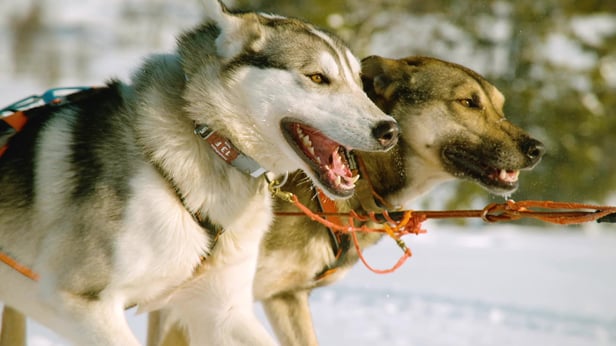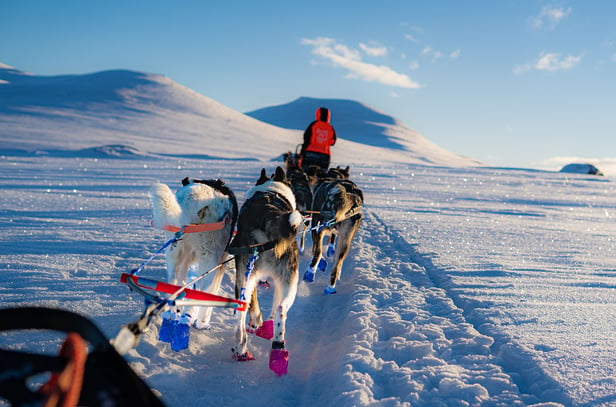In March last year, Iditarod mushers were chased down the trail by a pandemic. Now, 12 months later, the world is still in the midst of the disease. The threat of Covid-19 has turned our lives upside down and is also leading to changes for the 49th iteration of The Iditarod Trail Sled Dog Race.
Rarely has "the great, unknown" been better suited to describe this race. This year all participants are back to being rookies. No one has run the race this way before. Old plans, routines and strategies must be thrown away, in favour of new thinking and ongoing adaptation on the trail. This is exactly what makes the race more exciting than ever!
I think this is going to be a really interesting race, because it's so different and there's so many options on how mushers can take on this years' challenge. I'm really excited to see the different strategies in order to be competitive, says Thomas Wærner.
Here are the most important changes in the Iditarod Golden Trail Loop 2021:
The show start was canceled, instead the organizers have held a virtual banquet for mushers and fans.
The race starts from Deshka Landing in the Susitna Valley.
There are a total of 47 participants this year. They have been tested (Covid) several times before the start and will be tested further during the race.
The race is shorter, with a total of 852 miles (1371 kilometres).
The route follows the traditional southern route up to the town of Iditarod, then goes to the ghost town of Flat, which serves as a turnaround point.
This means that the windy and often demanding coastline is eliminated in this year's race, but that does not mean that it is easier. The dog teams have to traverse the highest elevations of the course as well as the "Steps", the Farewell Burn, and Dalzell Gorge not just once, but twice (!), before the finish line at Deshka Landing.
Iditarod has 40 hours of required rest. The long 24-hour rest may be taken at any checkpoint up to and including Iditarod, but not after. The 8-hour required Yukon River rest can be taken at any checkpoint from Rohn and back to Rohn. The 8-hour required White Mountain rest will be taken at Skwentna on the return trip to Deshka Landing.
Another thing that makes this year's route demanding is that there will be changes to the checkpoints, says Wærner.
This year's checkpoints are Skwentna, Finger Lake, Rainy Pass, Rohn, Nikolai, McGrath, Ophir and Iditarod - with the same checkpoints on the way back. Frequently used checkpoints for the 24 hour rest, such as Takotna and Cripple, are not an option this year. This is something that will shake things up a little.

There will also be less service and little access to heated sleeping facilities at the checkpoints, and more demanding to get clothes dried and recharge batteries, etc. This will ask more of the mushers, both physically and mentally, says Wærner.
He believes that the musher who manages to adapt to changes without being stressed or letting the unforeseen affect the mood, will have advantages.
A fast team at the second half of the race is always a plus, and perhaps especially this year, when the slow-moving coast has been replaced by more easy-to-run trails inland, but as always there is a crucial element beyond everyone's control: the weather. It will be sunny and mild during the start, but the weather can change quickly!
We look forward to following the competition closely and sharing daily race analyses with fans and followers.
You can follow live the start here




.png)